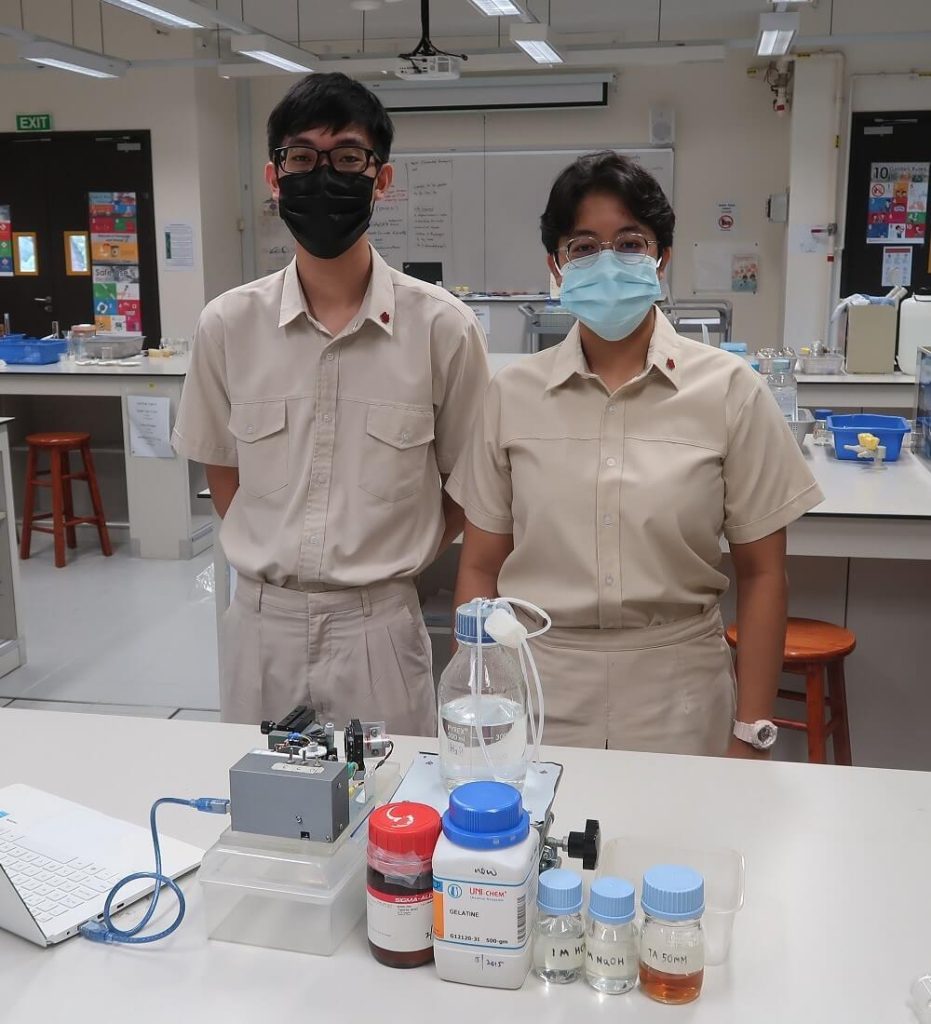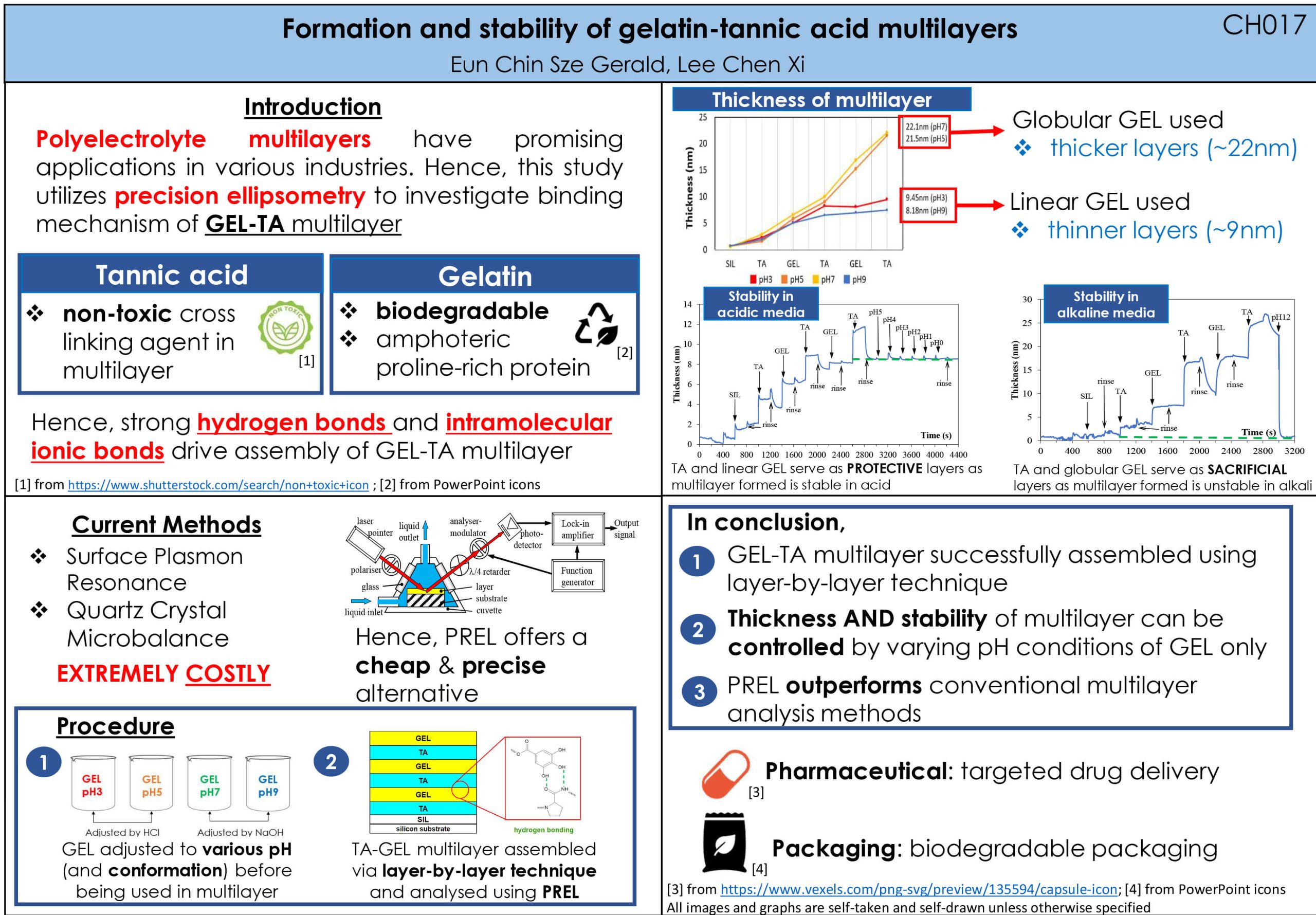SSEF Silver Award
Singapore Science and Engineering Fair (SSEF) 2022
Eun Chin Sze Gerald and Lee Chen Xi, Hwa Chong Institution
Supervisor: A/Prof Nikolai Yakovlev
CH017, Formation and stability of gelatin-tannic acid multilayers


Polyelectrolyte multilayers have potential applications in coating, packaging and creation of microcapsules for drug delivery. In this study, layer-by-layer assembly of gelatin (GEL) and tannic acid (TA) multilayers were carried out using precision ellipsometry (PREL). Real-time measurements of thickness and stability of GEL-TA multilayers were conducted using PREL. By utilising the amphoteric properties of GEL, GEL conformation can be easily altered under different pH as it bears positive and negative charges in various pH conditions. GEL at pH 3 and 9 assumes a linear conformation, while GEL at pH 5 and 7 assumes a globular conformation. This affects the thickness, and stability of the multilayer when subjected to acidic and alkaline conditions. In acid, the GEL-TA multilayer assembled is stable, allowing it to serve as a protective layer in acidic environments. In alkali, GEL-TA multilayers assembled with linear GEL are stable as they are more compact, thus it serves as a promising protective layer in alkali. On the other hand, GEL-TA multilayers assembled with globular GEL are unstable in alkali as they are less compact. Thus, these layers can serve as sacrificial layers as they are degraded upon exposure to alkali, highlighting their potential applications as temporary packaging materials. Thus, by altering the pH of GEL, the thickness and stability of GEL-TA films can be controlled, making them a promising biodegradable and sustainable alternative to one-use plastics commonly used in industrial processes.

